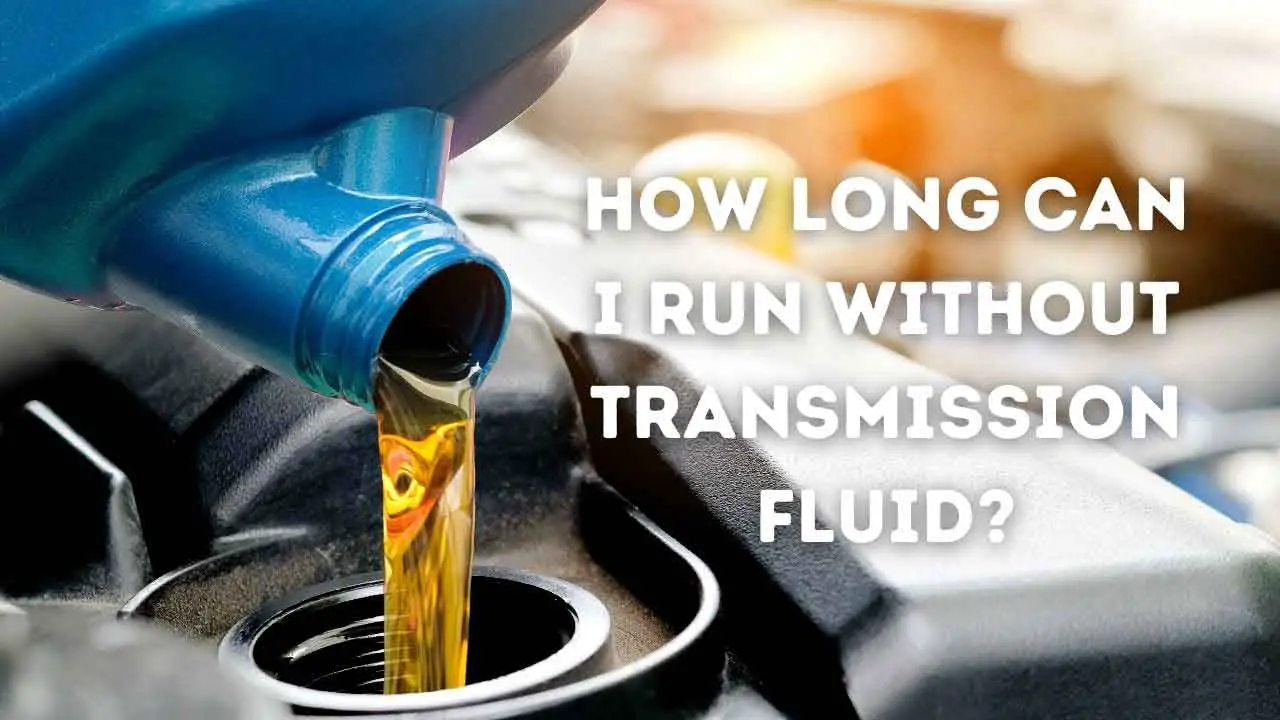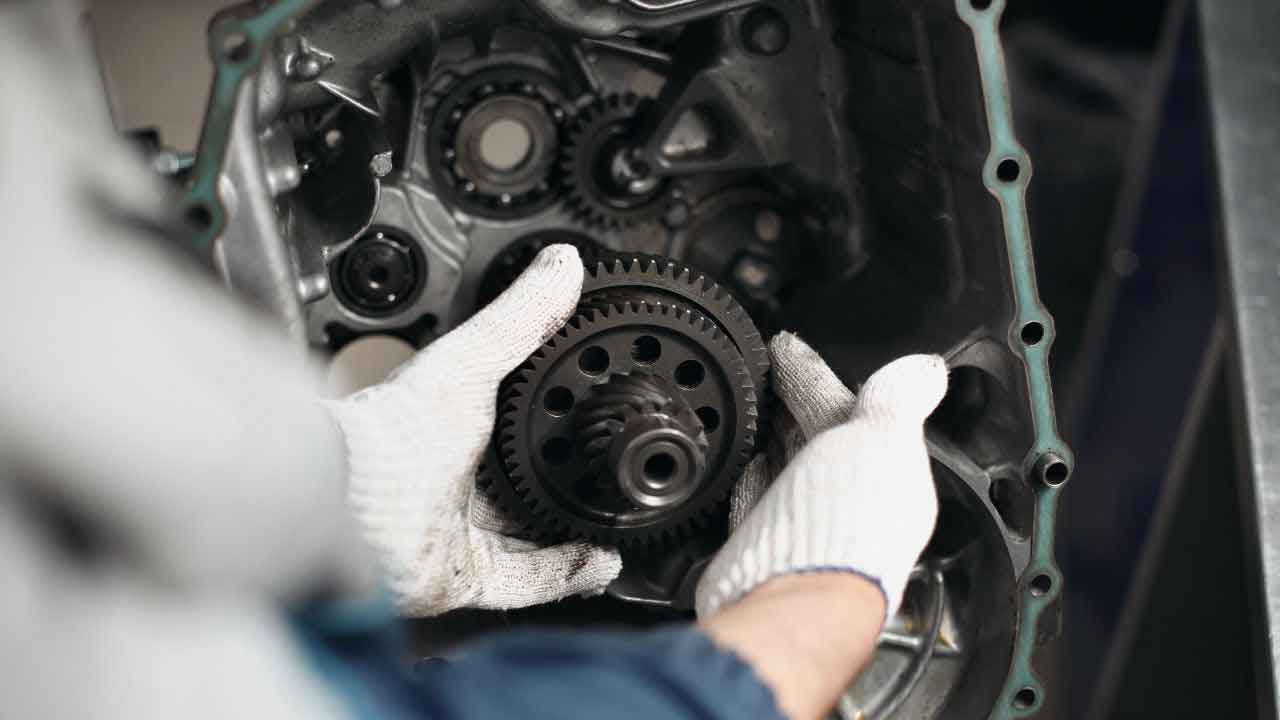Oil change is a common phenomenon for car owners. But changing transmission fluids? Or inspecting it? This is something that most people ignore.

Because people don’t change transmission fluid now and then like other lubricants in the vehicle, any malfunction in the transmission remains unnoticed till any serious issue pops up.
In this article, we have answered a bunch of frequently asked questions about transmission fluids. So, without any further ado, let’s get started –
We have covered from the basics of the transmission fluid to the types of transmission fluid, how can transmission fluid run out, and what happens if transmission fluid completely runs out and you drive the vehicle.
What is Transmission Fluid?
Transmission fluid is a combination of lubricating oil and chemicals. It is made for smoothly shifting the gears without damaging the transmission. Apart from lubricating the transmission, it keeps your transmission cold, protecting it from wear and tear.
What does Transmission Fluid Do?
Moving parts in the vehicle that are made of metal require enough lubrication to avoid friction. As the friction generates heat and excessive heat damages the parts, it is mandatory to use lubricants in different parts of your vehicle in order to keep it in good shape for a long period.
That’s what the transmission fluid does. It prevents friction inside the transmission when you drive the vehicle and shift the gear. This also improves the driving experience as, without lubricants, the parts will vibrate and generate sound.
So, in the simplest form, transmission fluid lubricates the system that controls the speed of your vehicle. Lubrication is mandatory to protect the transmission from getting damaged because of internal frictions and excessive heat generation.

Manual Transmission Fluid vs Automatic Transmission Fluid
The basic difference between the manual transmission fluid (MTF) and automatic transmission fluid (ATF) is – one is used in manual transmissions while the other is for automatic transmissions.
So, why there are two types of fluid for two types of transmission? Let’s explain-
Manual transmission and their fluids, both are cheaper than automatic transmissions and their fluids. That’s because the automatic transmission has more parts and functions than straightforward manual transmissions.
That’s why automatic transmission fluids are thinner than MTF. While in most cases, you can use ATF in your manual transmission vehicle, it is not vice versa. That means you can’t use manual transmission fluids in automatic transmission vehicles. However, confirm this with your owner’s manual to prevent damage to your vehicle. While this can work in most cases, your one can be different.
Talking about their ingredients!
Manual fluids are less optimized and the ATF is optimized for smooth function and gear shifting without causing any harmful friction among complicated transmission parts.
Can You Put Automatic Transmission Fluid in a Manual Transmission?
Yes, as long as the ingredients match. Because the automatic transmission fluid is thinner and gives much more lubrication than the manual transmission fluid, you can use automatic transmission fluids in your manual transmission vehicle most of the time.
However, as we have talked about this earlier once, this needs to be verified with your owner’s manual so that you don’t damage your car in the process. Transmission is a sensitive part of your vehicle. A slight variation from the recommended actions can damage it.

How Does the Transmission Fluid Run Out?
Transmission fluid runs out because of leaks in the transmission. Leaks can develop for various reasons from a low-quality seal to poor car repair, or excessive heat generation around the seal. When a tiny portion of the seal breaks off, it starts to open up day by day causing low transmission fluid-related problems.
While it can be very difficult to recognize a transmission leak before it is too late, we have a solution for you.
Before you leave the garage for the office in the morning, watch out for any red or green fluid on the surface. If you see any marks on the ground, lay paper towels on the ground the next day when you park the car. So, you will be 100% sure about the leak and the position from where the fluid is leaking.
You may also like to read our guide on roll up truck bed covers, or the article on fog light symbols and its usage. If you are looking to modify your vehicle, consider reading our buying guide on tail light tints.
What are the Symptoms of Low Transmission Fluid?
A lot of you were asking us about the symptoms of low transmission fluid. So, here it is, a complete guide for your question – how do I know my vehicle is low on transmission fluid?
1. Difficulty Shifting Gears
The first thing you will experience is difficulty in shifting gears. Because of lack of lubrication inside the transmission, it will not be smooth like earlier when shifting the gear. So, if you are experiencing any unusual difficulty in shifting the gears, this is a clear indication that there might be a problem in your transmission. And 80 out of 100 times, it is the low transmission fluid that is causing the issue.
2. Overheating in the Transmission
Another symptom of the lack of fluid in your transmission is overheating. If you feel burning smells or see unusual smokes coming from the transmission block, this is an indication that the parts in the transmission are getting engaged without enough lubricants to cool them down.
3. Delayed Gear Shifts
Are you experiencing a 2 or 3 seconds pause before the gear shifts after you engage it? This is a massive indication that you need to check your transmission system. Delay in gear engagement happens because the hydraulic can’t generate enough strength to shift the gear instantly as there is not enough lubrication.
4. Can’t Shift the Gear
This is a red flag! If you experience this, STOP driving the car and get it towed to the mechanic shop. In automatic transmission vehicles, the system stops engaging gears as soon as the fluid reaches the danger level.
However, you may not get this warning in your manual transmission vehicle. So, look for other symptoms to prevent costly damage to the transmission.
5. Unusual Grinding Sound
If you drive on a quiet road, you should hear a grinding-like sound coming from your transmission. This happens because of the friction among the parts in your gearbox. If you hear this, stop the vehicle for a quick inspection.
However, grinding sounds can come from other parts of your vehicle as well when you have worn out metal parts or poorly assembled parts in your vehicle. A faulty assembly of exhaust muffler is also a cause of having unusual sound. So, check that too.
Apart from these, you can see your check engine light is on because of a transmission problem. So, check that out as well.
What Happens If you Drive Without Transmission Fluid?
If you drive with low or no transmission fluid, you are making your transmission vulnerable. It can get damaged within moments costing you hundreds or even thousands of bucks for repair or replacement.
Driving the vehicle without transmission fluid will make the transmission excessively hot and you will feel a burning smell from the driving seat. Apart from getting hot, it will produce grinding noise, will shift the gear inaccurately, and eventually, the transmission will fail.
An important thing to note here is that these symptoms can appear very quickly one after another without giving you enough time to drive it to the mechanic shop and get it lubricated. So, you should not ignore the issue at all.
As soon as you see symptoms, stop driving and inspect the vehicle for taking further steps.

How Long Can I Run Without Transmission Fluid?
You can’t run a meter without transmission fluid if you have an automatic transmission vehicle. Automatic transmission cars stop working as soon as the fluid level reaches the danger level.
On the other hand, in the case of a manual car, you may become successful running the car without transmission fluid but that won’t last long. You may not even reach the destination before it gives up. Because of excessive heat and friction inside the transmission, expensive transmission parts will wear out or even can break.
Final Thoughts
As you now know about the symptoms of a malfunctioning or bad transmission and when to inspect the transmission, you should be able to save your back. For the optimal performance of your vehicle, you should keep the components perfectly lubricated.
Because some vehicles come with sealed transmissions and without a transmission fluid dipstick, it becomes very hard for the owner to get an idea about the situation inside.
A good thing about sealed transmission is the fluid is supposed to last a lifetime. However, this is not the case all the time. So, we recommend checking the transmission fluid of a sealed transmission every hundred thousand miles.
If you don’t know how to check transmission fluid in a sealed transmission vehicle, here is a nice video for you to get the idea –